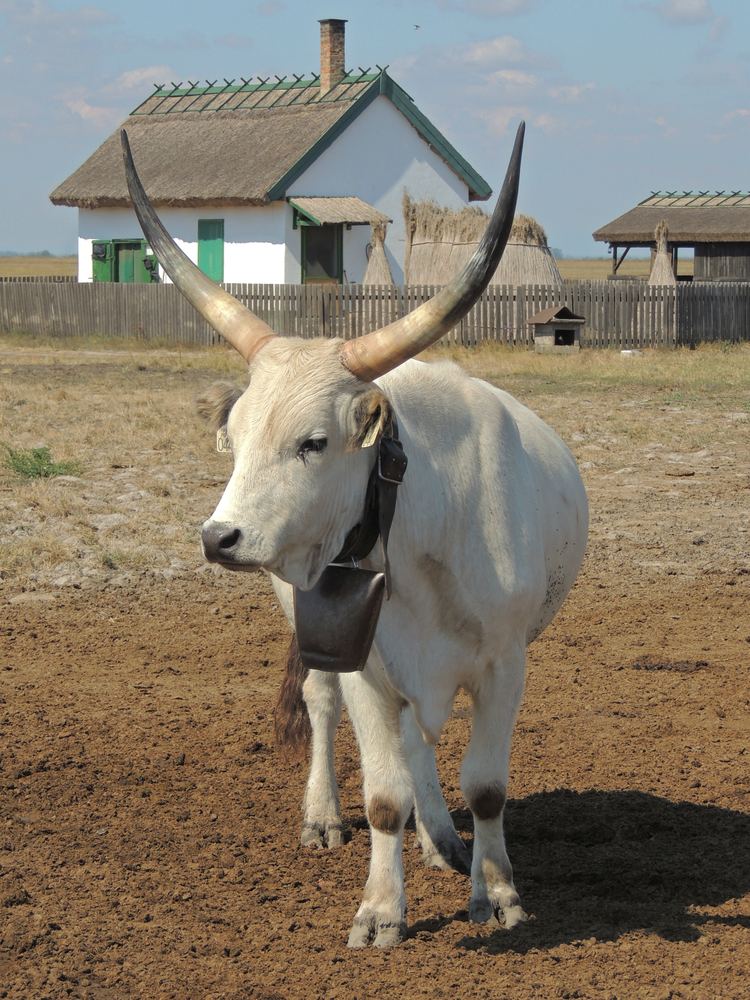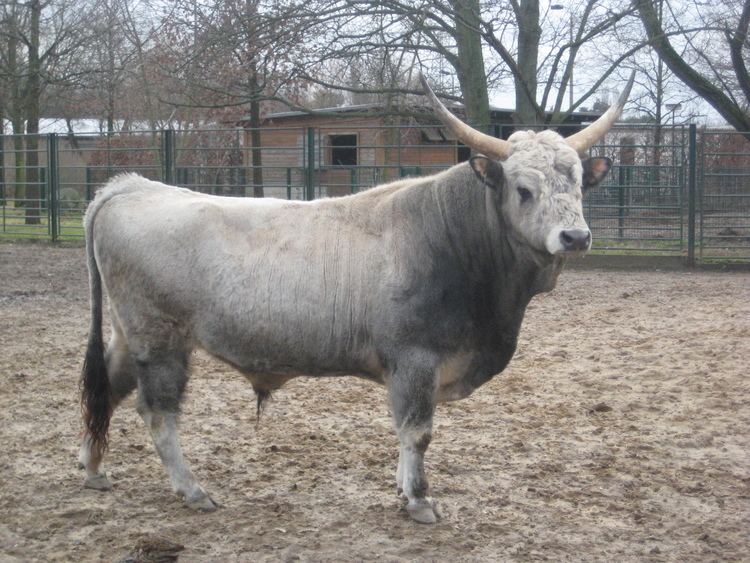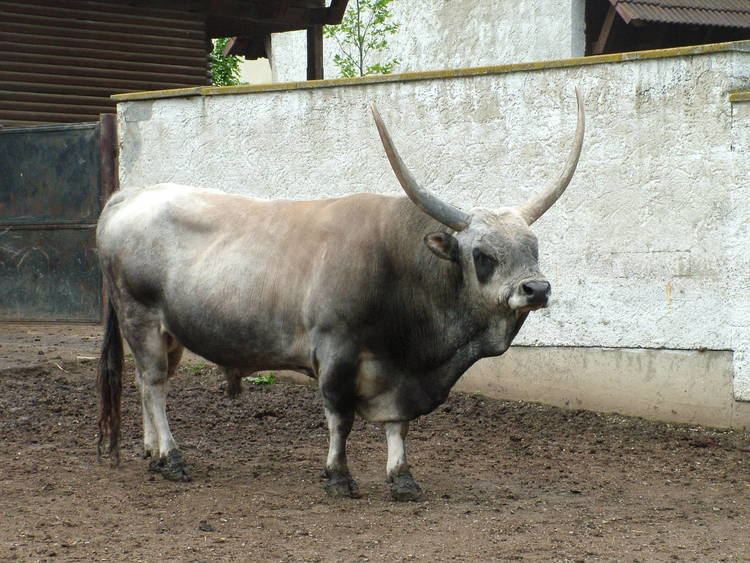Country of origin Hungary Rank Breed | Scientific name Bos taurus | |
 | ||
Conservation status FAO (2007): not at risk Other names Hungarian Steppe cattle
Magyar szürke Use dual-purpose, draught and beef Weight Male: 800 kg
Female: 525 kg Skin color slate-coloured, dark grey mucosa Height Male: 1.4 – 1.6 m (Adult), Female: 1.4 – 1.4 m (Adult) Mass Male: 800 – 900 kg (Adult), Female: 500 – 600 kg (Adult) Similar Racka, Mangalica, Ankole‑Watusi, English Longhorn, Tyrolese Grey cattle | ||
Hungarian Grey cattle (Hungarian: Magyar szürke szarvasmarha), also known as Hungarian Steppe cattle, is an ancient breed of domestic beef cattle indigenous to Hungary.
Contents

The breed belongs to the group of Podolic cattle and is well adapted to extensive pasture systems.
Hungarian grey cattle magyar sz rke szarvasmarha
Characteristics

Hungarian Grey cattle are slender and tall. The bulls reach a height of 145 to 155 cm and a weight of 800 to 900 kg, the cows 135 to 140 cm and 500 to 600 kg.

The colour ranges from silvery-white to ash-grey. As in other Podolic breeds, the calves are born wheat-coloured, and become grey at about three months old. Hungarian Grey cattle are robust, unpretentious, easy-calving and long-lived. Their horns are directed upward and are long and curved.
History

The breed probably arrived with the 9th century Hungarian immigration from the east to the Hungarian lowlands. In the Middle Ages and early modern times the breed was used as a draught animal but from 1861 has been bred for early maturity and its beef quality, being herded live to the markets of Europe. Nowadays Hungarian Grey cattle are kept mainly as tourist attractions in the Hortobágy National Park and other Hungarian national parks. Small herds may be found in a few other places, e.g. Bocfölde, Western Hungary. These herds serve as gene banks, due to their reported resistance to cattle diseases which affect more highly bred cattle types. By 1975 there were only 300 cows left in two herds, but numbers have since increased. The rebound in the cattles numbers is partially due to cryoconservation efforts put forth by the Hungarian government.

